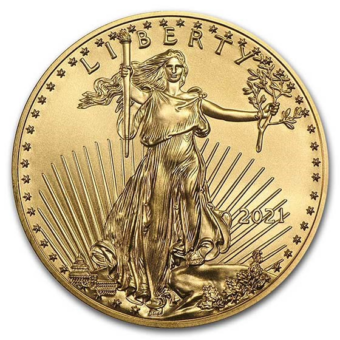A Daily Journey Through the Week's Market
Monday - 4.22.24: Gold and silver prices fell sharply in early U.S. trading Monday, due to profit-taking and weak long liquidation in futures markets, alongside a perceived easing of Middle East tensions, reducing demand for these safe-haven metals. With June gold down $57.50 at $2,356.20 and May silver down $1.309 at $27.50, the market response also reflects actions by gold miners who are forward selling at new high prices, which could moderate further price increases.
Tuesday - 4.23.24: Gold and silver prices dropped sharply to nearly three-week lows in early U.S. trading on Tuesday, driven by profit-taking and weak long liquidation in the futures markets. The decline is attributed to short-term futures traders facing margin calls and liquidating their positions, contrasting with major central banks and long-term investors who continue to acquire gold bullion. Despite the current sell-off, gold and silver remain technically bullish overall, although continued sharp selling could suggest potential near-term or even major market tops.
Wednesday - 4.24.24:.Gold and silver prices continued their decline in early U.S. trading on Wednesday, as the markets underwent corrections following recent peaks—gold reaching a record high and silver a three-year high. Despite the current downward trend, the primary uptrends indicated on the daily bar charts for both metals remain unbroken. However, sustained strong selling could potentially signal the establishment of near-term market tops.
Thursday - 4.25.24: Gold and silver prices saw a modest increase in early U.S. trading on Thursday, as market bulls attempted to halt the recent downward corrections in the metals. June gold was last up $3.80 at $2,342.20, and May silver increased by $0.124 to $27.47. The key U.S. data point for the day is the advance estimate for the first-quarter GDP, which is projected to show a 2.4% year-on-year increase, compared to the 3.4% growth in the previous quarter, with the report’s inflation indexes anticipated to rise by around 2.0%.
Friday- 4.26.24: Gold and silver prices rose significantly in early U.S. trading on Friday, despite a lukewarm reaction to a U.S. inflation report that slightly exceeded market expectations. The report, reflecting hawkish sentiments towards U.S. monetary policy, suggested delaying interest rate cuts by the Federal Reserve. Gold climbed to $2,360.00 and silver to $27.61. Additionally, the personal income and outlays report for March revealed the PCE inflation index, closely monitored by the Fed, increased by 2.7% year-on-year, slightly above the anticipated 2.6%. The core PCE index also surpassed expectations, rising by 2.8% year-on-year.
Gold Prices Remain Buoyant as U.S. Core PCE Inflation Holds Steady
Despite inflationary pressures, the gold market has maintained its upward trajectory, with prices staying firmly above $2,350 per ounce. The U.S. Department of Commerce reported a steady rise in the core Personal Consumption Expenditures (PCE) price index, which increased by 2.8% year-over-year in March, slightly above the anticipated 2.7%. This figure remains above the Federal Reserve's 2% target, signaling persistent inflation. Market reactions suggest that expectations for the Fed's monetary policy have stabilized, with no immediate interest rate cuts anticipated. Meanwhile, personal spending outpaced forecasts, indicating robust consumer activity despite economic uncertainties. This environment, marked by elevated inflation and cautious monetary policy, continues to support strong gold prices.
We’re About to See a Gold ‘Melt Up’ Unlike Anything Since the 1980s
Gold is currently exhibiting the highest likelihood of a significant price increase, or 'melt-up,' since the 1980s, largely driven by factors such as escalating tensions in the Middle East, substantial purchases by central banks, persistent inflation concerns, rising U.S. government debt, and ongoing currency debasement. Jared Dillian, a seasoned market analyst and author, suggests that while the gold market has surged impressively, hitting new record highs and prompting major banks like Citigroup, Goldman Sachs, and UBS to raise their gold price forecasts significantly, investors should remain cautious. Dillian warns of a potential 10% correction following what he describes as an overheated market sentiment. Comparing gold’s trajectory to cocoa’s dramatic price surge, he speculates a similar parabolic rise could occur for gold if certain economic pressures persist, particularly those related to U.S. fiscal policies and debt levels. Despite this optimism, Dillian maintains a cautious stance, planning to hedge his substantial gold exposure to manage risks effectively.
Dethroning the Dollar: China and Russia Forge New Paths in Currency Trade
China and Russia are significantly altering the landscape of international finance by limiting the use of the US dollar in their trade relations. This move comes as both nations push forward with their joint efforts to reduce global dependency on the USD, aiming to enhance their economic sovereignty and geopolitical influence. They are actively promoting the use of their national currencies—the Yuan and the Ruble—in bilateral trading, marking a major step towards creating a multipolar currency system. This year alone, China and Russia plan to conduct $260 billion worth of trade using predominantly their own currencies, with some transactions possibly involving the Euro. This shift is not only a clear sign of escalating de-dollarization but also sets a precedent that could inspire other BRICS+ members to follow suit. The transition away from the USD is part of a broader strategy by China and Russia to diminish Western economic leverage, amid broader geopolitical tensions, including potential new sanctions from the US targeting Chinese banks in a bid to curb these nations' growing alliance.
U.S. Economic Growth and Inflation Concerns: A Challenging Start to 2024
In the first quarter of 2024, the U.S. economy experienced a significant slowdown in growth combined with rising inflation, posing challenges for both the market and policymakers. The GDP grew at a disappointing 1.6% annualized rate, notably below the anticipated 2.4%, and lower than the previous quarters' more robust performance. This sluggish growth was attributed to reduced consumer spending, which increased by only 2.5%, and a downturn in private inventory investments, despite some support from fixed investment and local government spending. Additionally, inflation pressures intensified, with the personal consumption expenditures price index climbing to 3.4%, significantly surpassing the Federal Reserve's 2% target. This dual setback of slower growth and higher inflation has led to a cautious market outlook, with implications for future Federal Reserve rate decisions and broader economic expectations.
BRICS Expansion Will Significantly Reshape the World Economy
The BRICS 2024 summit, scheduled for October in Russia's Kazan region, is set to significantly impact the global economy with its agenda focused on de-dollarization. The summit marks the inclusion of new members—the United Arab Emirates, Egypt, Iran, and Ethiopia—expanding the alliance and enhancing its financial strength. A key discussion point will be the adoption of local currencies over the US dollar for cross-border transactions, a move that could undermine the dollar's global hegemony. This shift comes as over 40 developing nations have shown interest in joining BRICS, indicating a growing consensus against the current dollar-centric trade system. Thai political scientist Jiraporn Ruampongpattana predicts that this expansion could disrupt existing geopolitical and economic norms, potentially catalyzing a reorientation of global financial power dynamics away from the West and challenging the dominance of the US dollar. This strategic enlargement signifies a pivotal moment that could lead to a redefined world economic order, setting the stage for a profound geopolitical divide.
World Bank: Gold Prices Peak with Optimistic Outlook Despite Economic Challenges
The World Bank forecasts an 8% increase in gold prices for the year, even as the market experiences a peak with recent record highs above $2,400 an ounce. This bullish perspective is bolstered by a 4% rally in the first quarter, indicating a sustained upward trajectory in the precious metal's value. According to the 2024 Commodity Market Outlook, the expected average price is around $2,100 per ounce, driven by heightened geopolitical tensions and a robust demand for safe-haven assets amidst global policy uncertainties. Notably, the World Bank also predicts that the existing strong inverse correlation between gold prices and rising U.S. bond yields may lessen due to continuous geopolitical safe-haven demand. Moreover, ongoing inflation pressures are anticipated to keep central banks' monetary policies restrictive longer than previously expected, contributing to a challenging but potentially rewarding environment for gold investors. The report highlights that while commodity prices are expected to decline slightly, they will remain significantly higher than pre-pandemic levels, supported by factors like clean energy transition demands and geopolitical instability.
Is BRICS At the Helm of Gold Record-Setting Rally?
The BRICS nations are currently driving a significant rally in the global gold market, anticipated to continue its upward trajectory. This movement is partly due to plans within the bloc to back a new currency with gold, positioning it as an alternative to the US Dollar. The interest in gold has been spurred by multiple factors, including the need for inflation hedging, the expectation of interest rate cuts, and ongoing geopolitical uncertainties. These factors have led to a steady increase in the Monthly Metals Index, with gold prices reaching new heights and setting a robust upward trend. Leading this charge are Russia and China, whose substantial investments in gold are encouraging other BRICS members to follow suit. This concerted effort is not only enhancing gold's financial appeal but is also expected to introduce greater market volatility and possibly redefine gold's role in international finance.
Next Week’s Key Events
Monday, April 29
No reports scheduled.
Tuesday, April 30
-
9:00 am: S&P Case-Shiller Home Price Index (February)
-
10:00 am: Consumer Confidence (April)
Wednesday, May 1
-
8:15 am: ADP Employment (April)
-
10:00 am: Construction Spending (March)
-
10:00 am: ISM Manufacturing (April)
-
10:00 am: JOLTS Report (March)
-
2:00 pm: FOMC Interest-Rate Decision
Thursday, May 2
-
8:30 am: Initial Jobless Claims (Week of April 27)
Friday, May 3
-
8:30 am: Employment Situation Summary (Jobs Report) (April)
IMPACT ON PRECIOUS METALS MARKETS
S&P Case-Shiller Home Price Index: Reflects trends in the U.S. residential housing market. A strengthening housing market can signify robust economic conditions, potentially boosting investor confidence and reducing demand for gold and silver as safe havens.
Consumer Confidence: Indicates the financial confidence of the average consumer. Higher confidence levels can lead to increased spending and investment in riskier assets, potentially lowering demand for gold and silver, which are considered safe havens.
ADP Employment: Provides insights into private-sector employment health. Strong employment numbers suggest economic stability, which can decrease gold and silver's attractiveness as protective investments.
Construction Spending: Serves as a gauge of economic activity in the construction sector. Increased spending can signal economic strength, possibly leading to lower demand for gold and silver.
ISM Manufacturing: Reflects the health of the manufacturing sector. Robust manufacturing growth can lead to heightened risk appetite, diminishing the allure of gold and silver as safety assets.
JOLTS Report: Offers data on job openings, a sign of economic health. More openings can indicate a stronger economy, reducing the need for gold and silver as safety assets.
FOMC Interest-Rate Decision: A critical determinant of the U.S. economic landscape. Rate hikes can strengthen the dollar and typically lower the appeal of non-yielding assets like gold and silver. Conversely, rate cuts can weaken the dollar and enhance the appeal of these metals.
Initial Jobless Claims: Indicates the number of individuals filing for unemployment benefits. Higher claims can suggest economic downturns, potentially increasing demand for gold and silver as safe havens.
Employment Situation Summary (Jobs Report): A comprehensive report that includes unemployment rates and net payroll additions. Strong job growth strengthens the economy, potentially decreasing demand for gold and silver. Weak reports can do the opposite, increasing their safe-haven appeal.





















